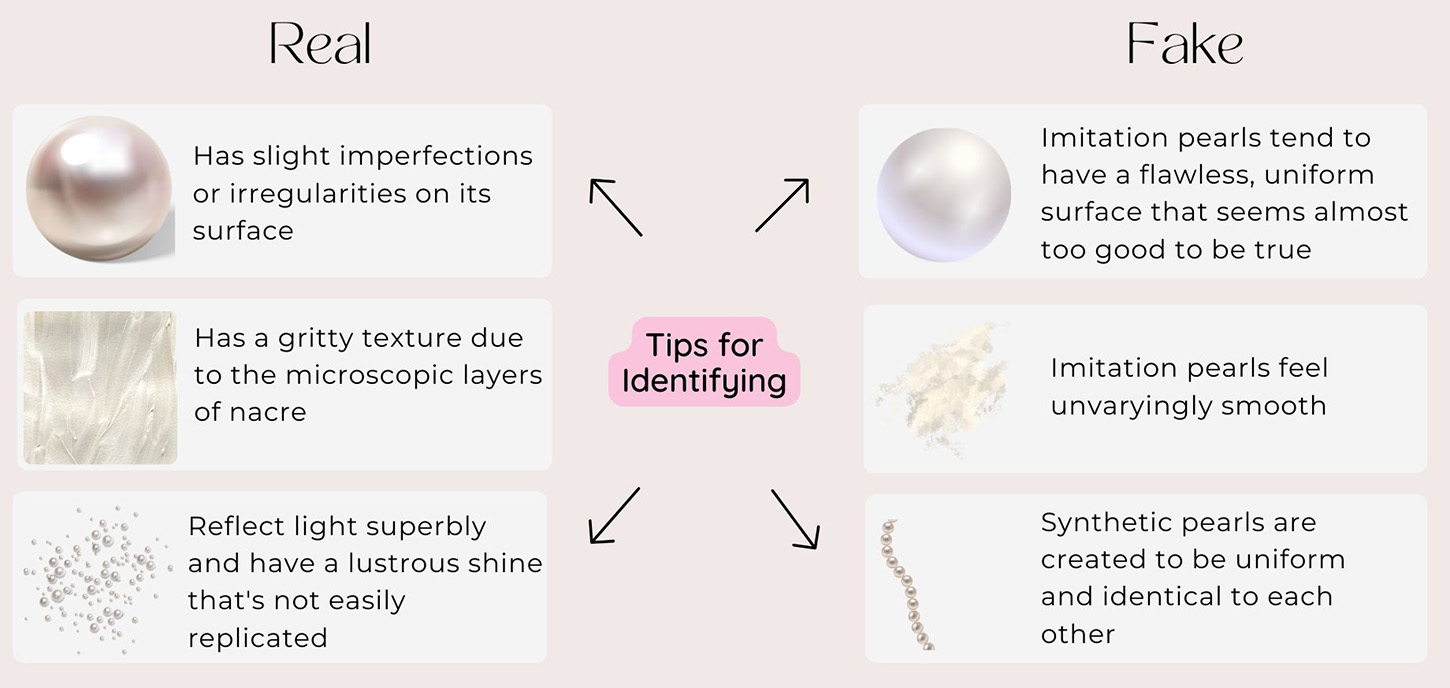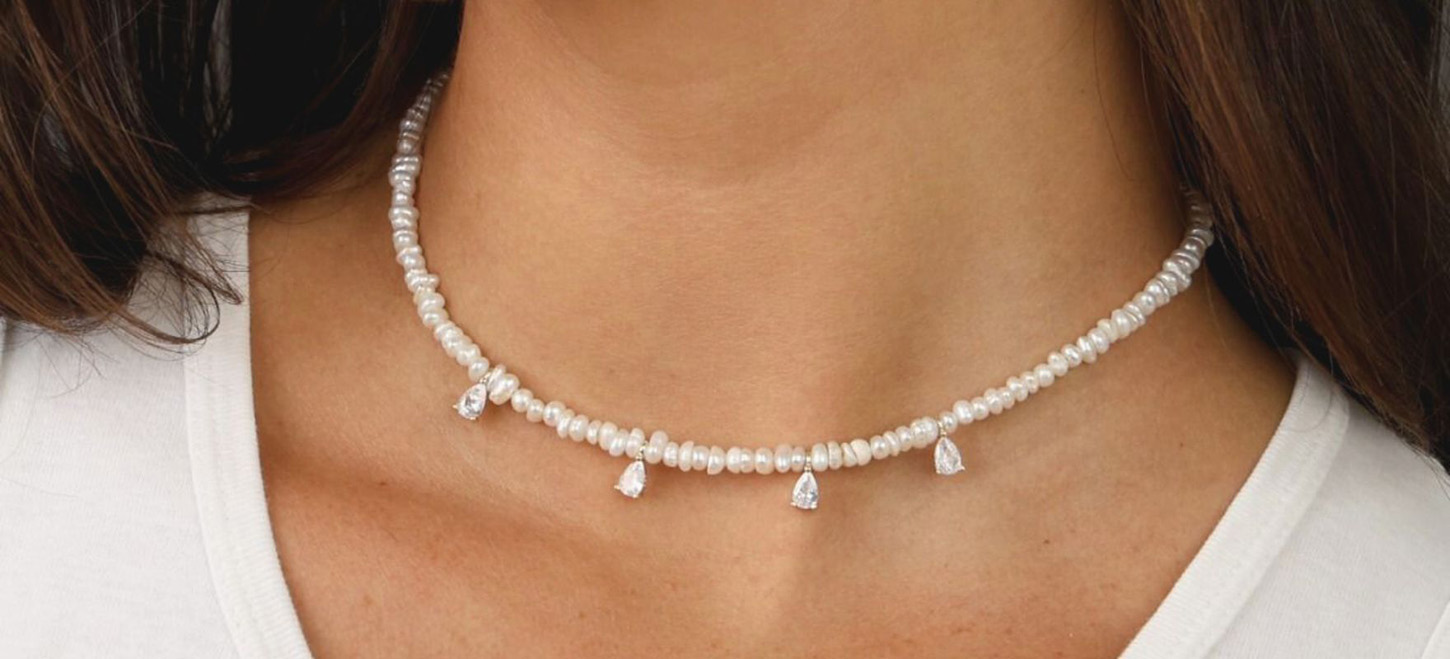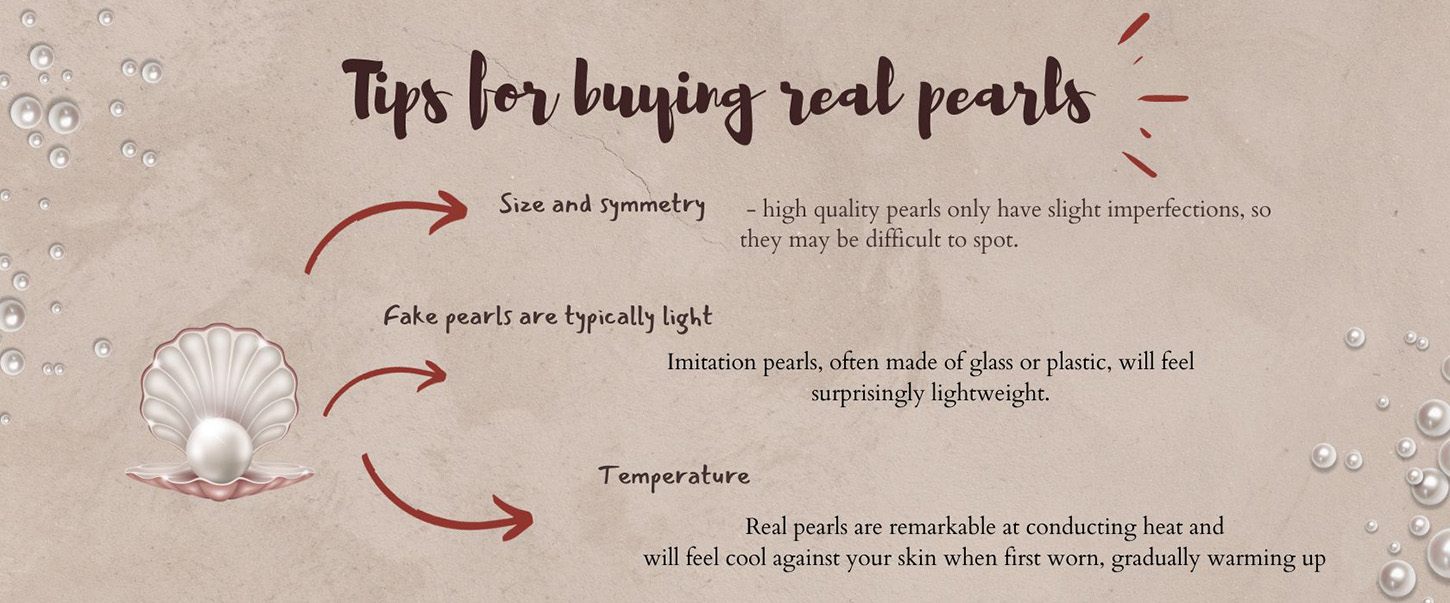Different Types of Pearls
Hey there, pearl enthusiasts! Isn't it fascinating how such a tiny, shiny object can possess so much charm? Pearls, those lustrous, mystical treasures from the sea, come in different types, each with a unique story. Let's explore!
Natural Pearls
Natural pearls, or pearls in their rawest form, are scarce and highly coveted. They form without human intervention when a tiny foreign object or irritant gets trapped inside an oyster. The mollusk then secretes a substance called nacre around this irritant, eventually creating a natural pearl. Harvesting natural pearls could be quite a gamble – it's said that only one in about 10,000 oysters would contain a natural pearl! Formed over many years, each natural pearl is unique, with shapes and sizes varying greatly.
Cultured Pearls
Let's turn our attention to the more accessible – cultured pearls. Originally developed in the early 20th century by Japanese entrepreneur Mikimoto Kokichi, these pearls involve human intervention to initiate the pearl-producing process. Technicians insert a mother-of-pearl bead or a piece of mantle tissue into the oyster, stimulating it to secrete layers of nacre. Cultured pearls come in all shapes and sizes, from the perfectly round Akoya pearls to large, irregularly shaped South Sea pearls and even tiny seed pearls.
Imitation Pearls
For those who appreciate the looks of pearls but want to keep things wallet-friendly, meet your new best friend – imitation pearls. Made from materials like glass, plastic, and even crushed mollusk shells coated with a pearlescent solution, these pearls mimic the luster of their authentic counterparts. Imitation pearls are perfect for trendy, affordable fashion jewelry. However, their sheen usually doesn't last as long, and they often lack real pearls' weight and cool touch.
Knowledge about the types of pearls can enrich your appreciation of pearl jewelry and even inspire your next purchase. Now, who's up for exploring more about these sea gems in the next installment, where we'll delve into quick visual inspection techniques? Stay tuned!

Quick Visual Inspection Techniques
Alright, folks, our pearl types are down. Now comes the tricky part: how can you tell if a pearl is real just by looking at it? Let's unveil some quick techniques that can come in handy while shopping for your shiny little friends.
Surface Texture and Imperfections
Real pearls, natural or cultured, are formed by nature – and nature isn't always perfect. So, if your pearl has slight imperfections or irregularities on its surface, take that as a good sign. On the other hand, imitation pearls tend to have a flawless, uniform surface that seems almost too good to be true.
Another point to consider is a pearl's texture. Real pearls have a gritty texture due to the microscopic layers of nacre. In contrast, imitation pearls feel unvaryingly smooth.
Luster and Reflections
The luster of a pearl is one of its most captivating qualities – it's what gives a pearl its glow, depth, and allure. Authentic pearls reflect light superbly and have a lustrous shine that's not easily replicated. They show a sharp and clear reflection. On the other hand, imitation pearls lack this depth of luster – they might shine, but you'll find their reflections to be somewhat cloudy or dim compared to a real pearl.
Shape Consistency and Size
Mother Nature is artistically flexible. She rarely creates two identical things, and pearls are no exception. If you come across a strand of pearls that are remarkably identical in shape and size, you might be dealing with imitation pearls. Due to their natural formation, real pearls often have slight inconsistencies, even when categorized as 'round' or 'near-round.'
Furthermore, real pearls come in various sizes. The pearl's type, the mollusk it's from, and the length of time it was allowed to form all contribute to its size. From tiny seed pearls less than 1mm in diameter to enormous South Sea pearls that can reach jaw-dropping diameters of over 15mm, Mother Nature gives us a broad spectrum to choose from.
Armed with these visual inspection techniques, you can start distinguishing between authentic and imitation pearls with your naked eye. But, to be sure you've found a real gem, you can also carry out a few simple physical tests, which we'll reveal in the next section. Until then, folks!
Physical Tests to Determine Pearl Authenticity
We're journeying into the nitty-gritty world of pearl testing. These hands-on methods can provide additional assurance in your quest for authentic pearls.
The Tooth Test (also known as the Friction Test)
Alright, it sounds a bit strange, but the tooth test is a tried and true method to check the authenticity of a pearl! It involves lightly rubbing the pearl across your teeth. Due to the natural nacre, authentic pearls will feel a bit gritty or sandy, whereas imitation pearls glide smoothly because of their coated or painted surface. Need to have the pearl in hand or feel more comfortable about this in public? More tests are coming up!
The Weight Test
Real pearls have a dense nacre coating, giving them a bit of heft. When you hold them, they should feel slightly heavy for their size. Imitation pearls, often made of glass or plastic, will feel surprisingly lightweight. However, remember that this test can be misleading if the imitation pearls are made of a heavier material or if you have yet to handle many real pearls.
The Temperature Test
Ever notice how pearls feel cool to the touch? That's due to their natural conduction properties. Real pearls are remarkable at conducting heat and will feel cool against your skin when first worn, gradually warming up with your body temperature. Imitation pearls usually feel at room temperature and won't give the same initial chill.
With these simple hands-on techniques, you're on your way to becoming a pearl authenticity pro. Yet, even experts must be careful; trusting your dealer can be just as important as these physical tests. Curious to know why? Find out in our next installment: Tips for Buying Real Pearls.
Tips for Buying Real Pearls
Now that you're armed with all this precious pearl knowledge, it's time to tackle the real-world challenge: safely buying authentic pearls. Here are some savvy tips to ensure your next purchase is a bona fide delight.

Purchasing from a Reputable Dealer
First things first, always buy from a reputable dealer. Sounds simple. But the market is flooded with fakes, so doing your homework is essential. A seller with a good reputation will not risk it by selling imitation pearls. Check out the dealer's reviews and ask around for recommendations.
Asking for an Authenticity Certificate when necessary
Sometimes, your pearl investment may be significant. If you're buying high-value pearls, don't hesitate to ask your dealer for an authenticity certificate. Most respected jewelers will provide a certificate from a recognized gemological laboratory that confirms the pearls' authenticity and provides you with peace of mind. Remember, it's okay to request this, especially when you're investing in pricier pieces.
Understanding the Difference in Value Between Natural and Cultured Pearls
Understand that natural and cultured pearls are equally authentic but priced differently due to their rarity and the efforts required to produce them. Wild pearls are often more valued due to their rarity, while cultured pearls are more accessible and affordable. Knowing this can help you decide what fits your budget while still meeting your desire for authenticity.
There you have it, folks! With this guide, you're on your way to becoming a pearl pro. Whether you choose natural pearls, cultured pearls, or budget-friendly imitations, remember that the beauty of a pearl lies not just in its luster but also in the joy it brings to its wearer. So, explore, experiment, and find that perfect pearl that makes you feel radiant!


![Double Pearl Earrings [Sterling Silver]](https://assets.talisa.com/media/catalog/product/cache/05f6c8a104ffe8873d8f2bc583f201ba/d/o/double_pearl_earrings_2.jpg)
![Drop Pearl Charm [18K Gold Plated]](https://assets.talisa.com/media/catalog/product/cache/05f6c8a104ffe8873d8f2bc583f201ba/d/r/drop_stackable_pearl_charm_18k_gp__1.jpg)

![Family Tree Pearl Women Name Bracelet [Sterling Silver]](https://assets.talisa.com/media/catalog/product/cache/05f6c8a104ffe8873d8f2bc583f201ba/f/a/family_tree_pearl_bracelet_-_engraved_bracelet_for_her_7.jpg)
![Sophie Pearl Necklace [Gold Plated]](https://assets.talisa.com/media/catalog/product/cache/05f6c8a104ffe8873d8f2bc583f201ba/p/i/pink_pearl_choker_necklace_-2.jpg)

![Pearl Name Bracelet [Sterling Silver]](https://assets.talisa.com/media/catalog/product/cache/05f6c8a104ffe8873d8f2bc583f201ba/p/e/pearl_bracelet_with_engraved_spheres_-5087.jpg)